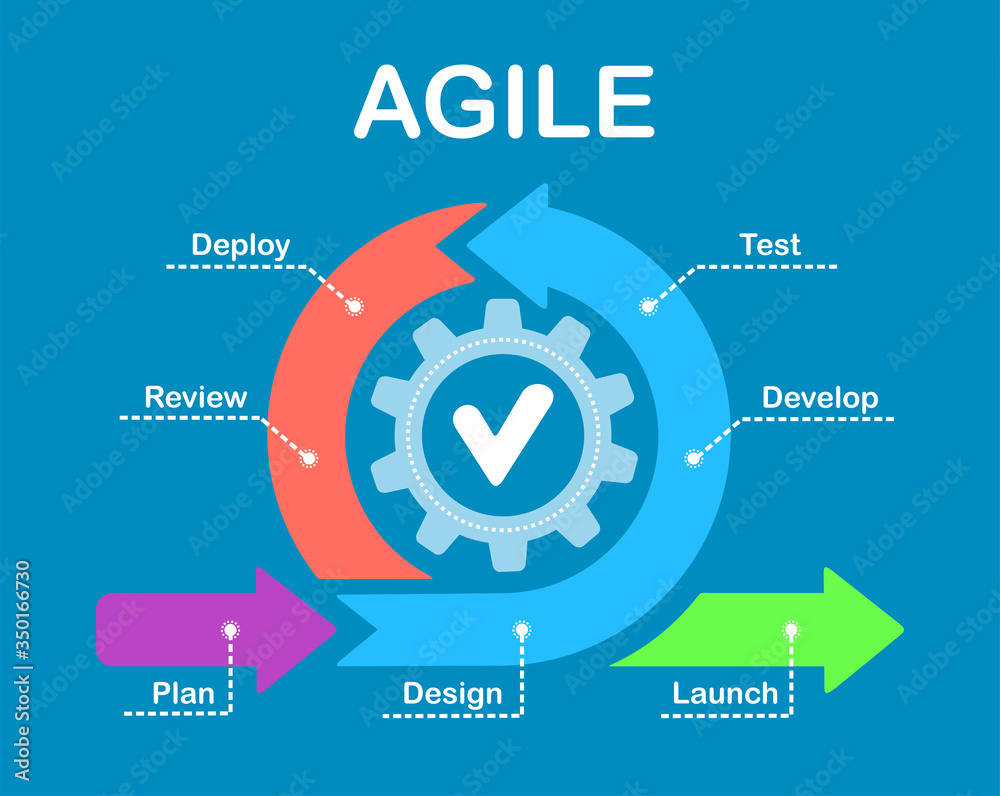Certainly! Agile is a flexible and iterative approach to software development that focuses on delivering value to customers through incremental progress. Below is a detailed Agile methodology tailored for your software development company:
1. Project Initiation:
- Stakeholder Identification: Identify all project stakeholders, including clients, end-users, product owners, and development team members.
- Vision and Objectives: Collaborate with stakeholders to define the project vision and high-level objectives.
- Project Charter: Create a project charter that outlines the project’s purpose, goals, scope, and initial timeline.
- Team Formation: Assemble cross-functional Agile teams, including developers, testers, designers, and other necessary roles.
2. Product Backlog:
- Requirements Gathering: Collaborate with stakeholders to create a Product Backlog that lists all the features, user stories, and tasks.
- Prioritization: Prioritize backlog items based on business value, risk, and dependencies.
- Estimation: Use techniques like story points or time-based estimates to gauge the effort required for each backlog item.
- Release Planning: Develop a high-level roadmap that outlines the order of feature delivery for the project.
3. Sprint Planning:
- Sprint Duration: Define sprint lengths (typically 2-4 weeks) and establish a consistent sprint schedule.
- Sprint Goals: Select a subset of high-priority backlog items to work on during the sprint.
- Task Breakdown: Break down the selected items into tasks and define acceptance criteria.
- Team Commitment: The development team commits to delivering the selected items by the end of the sprint.
4. Development:
- Daily Stand-ups: Hold daily stand-up meetings to keep the team aligned and discuss progress, challenges, and impediments.
- Continuous Integration: Integrate code regularly and automate testing to maintain code quality.
- Collaborative Development: Encourage collaboration, pair programming, and knowledge sharing among team members.
- Test-Driven Development: Write tests before code to ensure quality and reliability.
5. Sprint Review:
- Demo and Feedback: At the end of the sprint, conduct a sprint review meeting to showcase the completed work to stakeholders.
- Feedback Collection: Gather feedback from stakeholders to understand if the product meets their expectations.
- Retrospective: Reflect on the sprint as a team, identify what went well, what could be improved, and agree on action items for the next sprint.
6. Sprint Retrospective:
- Continuous Improvement: Analyze the sprint’s successes and failures to identify areas for improvement.
- Action Items: Develop an action plan for addressing issues and enhancing the team’s processes.
- Implement Changes: Make necessary process changes to enhance team productivity and product quality.
7. Backlog Refinement:
- Regular Grooming: Periodically review and update the Product Backlog, ensuring it remains relevant and well-prioritized.
- Detailed Requirements: Elaborate on user stories and tasks as the team’s understanding evolves.
- Remove Obsolete Items: Remove or archive items that are no longer relevant.
8. Release and Deployment:
- Incremental Releases: Deliver functional increments of the product at the end of each sprint.
- User Acceptance Testing: Allow stakeholders to validate and accept completed features.
- Deployment: Use automation and continuous integration/continuous deployment (CI/CD) to deploy the product to production.
9. Monitoring and Feedback:
- Monitoring: Continuously monitor the deployed product for performance, reliability, and user engagement.
- Feedback Loops: Gather user feedback to identify areas for further improvement and prioritize new features.
10. Scaling and Expansion:
- Team Expansion: As the project grows, consider adding more teams following the same Agile process.
- Large-Scale Agile Frameworks: Explore frameworks like SAFe, LeSS, or Spotify to coordinate multiple Agile teams.
11. Documentation and Knowledge Sharing:
- Maintain Documentation: Keep documentation up-to-date, including user manuals, architectural diagrams, and coding standards.
- Knowledge Sharing: Encourage knowledge sharing sessions and cross-training among team members.




